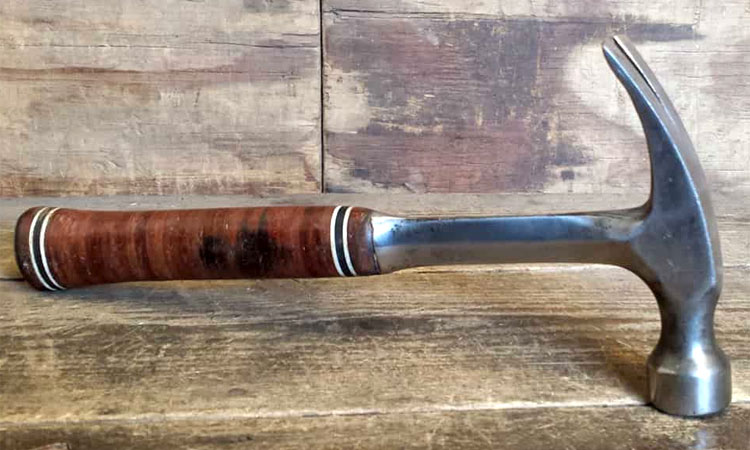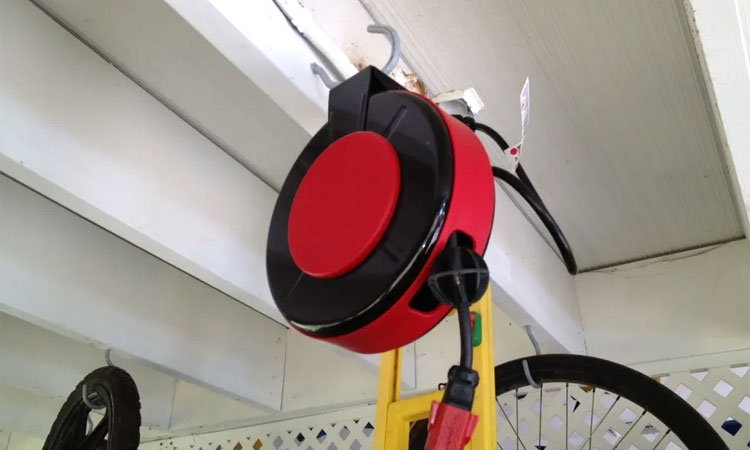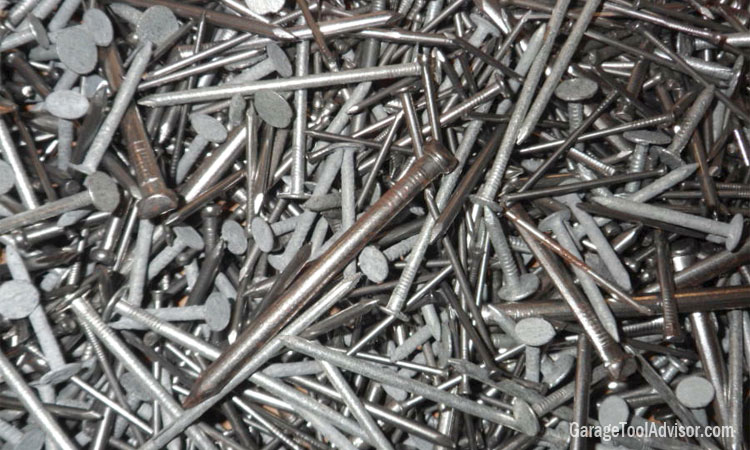9 Best Claw Hammers to Do More with Less Effort

Craftsmen and trade workers will tell you that the best claw hammer depends on the job you are working on. A long-handled hammer allows you to drive nails faster and apply more leverage when pulling, but there are always occasions when a shorter handle lets you get into difficult spots.
Even the hammer head makes a difference, as a milled face tends to give more traction, while a smooth face will not mar the surface of soft wood and other surfaces. To that end, each of the top picks presented here can be considered the best depending on the use.
Having a couple different types of hammers in your tool collection will also prove to be useful.
Our 9 Favorite Claw Hammers
| Product | Head | Face | Length | Made In | |
|---|---|---|---|---|---|
| Estwing E3-16S | 16 oz | Smooth | 13.0" | USA | |
| Stiletto TB15MC | 15 oz | Milled | 17.5" | USA | |
| Estwing E16S | 16 oz | Smooth | 12.5" | USA | |
| DeWalt DWHT51048 | 16 oz | Smooth | 13.2" | Taiwan | |
| Vaughan FS999ML | 20 oz | Milled | 16.0" | USA | |
| Stanley 51-162 FatMax | 16 oz | Smooth | 14.0" | Mexico | |
| Husky N-A20HK | 20 oz | Smooth | 13.9" | China | |
| Irwin 1954889 | 16 oz | Smooth | 12.8" | China | |
| Efficere Stubby | 8 oz | Smooth | 6.0" | China |
Claw Hammer Reviews
#1 – Estwing E3-16S 16-Ounce Straight Rip Claw Hammer
Made in the USA, Estwing is one of the most popular claw hammers for framing, sheeting and other carpentry. To prevent breaking, the handle and head are forged from a single piece of solid steel, and the long, straight claw is handy for prying and pulling.
At 13 inches long, it gives you more leverage for faster driving, and the cushioned vinyl grip will let you hold the handle for long periods without causing muscle cramps or exhaustion.
The E3-16S has a smooth face that allows uniform dimpling on drywall and won’t leave unpleasant marks on pine or other soft woods.
While it’s great for many jobs, it may not have the weight for heavy framing or forming. If you need an all-purpose hammer or one that will never let you down sheeting or doing trim, this hammer can’t be beat.
But you should look at a 20 ounce or heavier hammer for framing walls or driving into pressure treated lumber. You should never attempt to pry from the side of head with any hammer, especially a solid metal shaft which could bend, ruining the balance and precision.
>> Check current price <<
#2 – Stiletto TB15MC 15-Ounce Claw Hammer
Manufactured from lightweight titanium, the Stiletto TB15MC is a top-of-the-line claw hammer when it comes to versatility. The ergonomic design causes less fatigue (bye bye carpal tunnel), while the titanium shaft reduces recoil and creates more leverage, doing the work of a 21 or 24 ounce hammer without the muscle stress.
The 15 ounce head comes with a milled face, but it also offers the unique capability of interchangeable faces, so you can swap out for a smooth face when the job demands it, and the magnetic nail starter of the milled face is ideal for overhead work and situations where you can only use one hand to get things started.
On the down side is the price which is the only reason why it’s not our number one pick. Also, the rubber handle grip only covers the lower end of the shaft, which limits your gripping options. If you are serious about your tools, want the best, and are willing to pay a bit more for a premium US-made product, this Stiletto is what you’re looking for.
>> Check current price at Amazon <<
>> Check current price at Home Depot <<
#3 – Estwing E16S 16-Ounce Claw Hammer

Owners of this hammer love its balancing. With the fulcrum set closer to the head, it provides the same impact as heavier hammers with less force. Many also note the handle and its leather grip are well-designed.
Despite this being an Estwing (manufactured in the US), there have been a small number QC issues with this model. Some have reported issues with the leather grip not being properly affixed. It should also be noted that the handle might be less comfortable for those with smaller hands.
>> Check current price <<
#4 – DeWalt DWHT51048 16-Ounce Claw Hammer

As expected from DeWalt, this hammer is both lightweight and powerful. The straighter claw makes it easier to pull nails, while the strong metal handle ensures a longer lifespan than traditional wooden handles.
Unfortunately, the smaller size of this hammer means it won’t be to everyone’s liking. Some have complained that this sizing makes it feel too flimsy for their liking. There’s also been at least one complaint that the head was beginning to break, although the exact circumstances are unknown.
>> Check current price <<
#5 – Vaughan FS999ML 20-Ounce Straight Claw Hammer
Vaughan & Bushnell is well-known in the construction business makes some of the best American made tools around. Their hammers are no exception.
This straight claw hammer has a hollow fiberglass handle, which reduces the shock and improves balance. The 20 ounce head is epoxy sealed and sure-lock wedged for more durability. The grip is contoured and slip resistant for maximum comfort.
Owners of this hammer love the lighter overall weight and reduced shock. They report that its more durable than they expected and highly recommend it for remodeling.
Keep in mind that this Vaughan hammer has a milled face so while it’s great for framing, it’s not so good on finish carpentry where it can damage soft woods. But you usually know you have an exceptional product when complaints are hard to find, especially online. So this is one product you can truly buy with confidence.
>> Check current price <<
#6 – Stanley 51-162 16-Ounce FatMax Xtreme Curved Claw Hammer

Its handle uses patented torsion control grip technology to reduce strain on your wrist and elbow. Meanwhile, the patented AntiVibe technology reduces vibration and impact shock.
As the name implies, this hammer boasts a broader head for better strikes. Users report that the handle design does everything it claims to. The grip is both comfortable and effective.
Most of this hammer’s complaints revolve around shipping/delivery so you’ll want to purchase from a reputable online merchant or at a local Big Box store.
Purchasers have reported receiving the wrong product, or the hammer arriving damaged on multiple occasions. When buying online, be sure there’s a return policy and examine the hammer immediately upon arrival.
>> Check current price <<
#7 – Husky N-A20HK 20-Ounce Rip Claw Hammer

The Husky hammer is a surprisingly good hammer for the price. Users report good balance effectiveness. Interestingly, very few people even notice this isn’t a 16oz model thanks to the weight distribution and handle design.
Despite being an overall hit with consumers, there are a few potential problems in the design. The balance means this hammer will make more noise than similar models.
The claw is also thicker, making it more difficult to pull some nails. Finally, a few users have had difficulty driving nails due to the change in fulcrum location.
>> Check current price <<
#8 – Irwin 1954889 16-Ounce Claw Hammer

This hammer has a good weight distribution. It’s quite durable and the fiberglass handle is sturdier than a traditional wood handle. Its low price makes this a great choice for those on a budget or just starting their tool collection.
There are some possible issues with QC on this model. Several consumers have reported the tool arriving damaged. There have also been reports that the head is actually cast steel, not forged as the description suggests.
>> Check current price <<
#9 – Efficere 8-Ounce Stubby Claw Hammer
For general household use or projects which require a hammer in close quarters, the Efficere stubby hammer is a dream come true.
At only about 6 inches long, this may be one of the most useful hammers you come across for that type of project, and the smooth face means you won’t mar soft cabinet or trim materials. Is has the same parts to a hammer but just at a smaller scale.
Since this hammer is designed for confined areas, the magnetic head can be a lifesaver, allowing you start nails one-handed instead of trying to squeeze one hand and a hammer into a tiny opening.
It’s also a good little hammer that will actually fit in the kitchen junk drawer if you just want to hang a picture on a wall without having to go to the garage.
On the other hand, a stubby hammer like this is almost useless for driving large nails or working with pressure treated material because of its light 8oz head and does not provide enough leverage to make up for the lack of weight.
It is great for odd jobs around the home as as a tool to keep with your camping gear, but don’t expect it to handle the same tasks as a full-size claw hammer.
>> Check current price <<
Choosing the Right Claw Hammer
One would think that a hammer would be one of the simplest tools out there, but the models above show just how much variance one could find in just one type of hammer.
Before placing your money down, take a moment to examine the following factors so you can pick the hammer that will best suit your personal needs.
Curved Claw vs Straight Claw
The claw shape allows you to perform different tasks. For example, a straight claw design such as on the Estwings above is better at ripping and tends to be a bit longer. They’re useful in demolition but a little less effective at pulling nails.
Long straight claws are thinner and more fragile than short straight claws, so always pick a straight claw with this issue in mind.
Meanwhile, a curved claw like on the Stanley FatMax makes it easier to get under a nail and pull it up by rocking the hammer. The claw is shorter than straight claws, but also doesn’t catch on things as much. You’ll find this more useful if your goal is to simply remove nails and not actually demolish anything.
Related: 30 Types of Nails and Sizes
Head Weight
The weight of a hammer might not seem so important at first, but it can really affect your body over time. Heavier weights mean faster work but more shock to your body, leading to quicker fatigue and a number of possible injuries with extensive use.
Meanwhile, lighter weights are easier on the body but take longer to do the job and may be nearly ineffective against the toughest materials.
Claw hammer heads are most often found in the 14 to 16 ounce range but can also go up to about 22 ounces. Lightweight “stubby” hammers often come with an 8 ounce head.
- 8 to 10 ounce – Lightweight “stubby” hammers that are of limited use due to their poor driving capability. But they work well in some tasks that are in close quarters or where control takes priority over power.
- 14 and 15 ounce – These are ones you’re likely to find in your home utility drawer. They’re easy to use and work well for hanging pictures and doing other light work, but not very useful in a workshop setting.
- 16 ounce – The most common weight for a claw hammer. These are perfect for the average DIYer and can be used by almost anyone.
- 20 ounce – Slightly heavier, so they give a better drive per swing. However, this is where people begin to feel the shock a little more clearly, so it’s less popular than the 16oz size. Still, a good 20 ounce claw hammer can become a DIYers best friend.
- 22 ounce – Generally the ceiling for most DIYers and not very common. These can drive a 16D nail while still remaining relatively lightweight overall. You’ll find this size most often in the hands of carpenters, although some home improvement DIYers that do a lot of woodworking may find this size to their liking.
- 25 ounce – Generally used for framing only and usually reserved for professionals due to their heft and risk of injury if not used properly.
See Also: Best Ball Peen Hammers
Material
The materials used in making the hammer are crucial for both durability and how long-term use affects the user. The head is generally made of a single piece of metal, with the handle being a variety of possible materials:
- All-steel hammers use forged steel for both the head and handle, cast as a single piece. These are the most durable but also have the worst vibration and shock. This is sometimes mitigated slightly by wrapping the handle with a leather or plastic grip, but should still be used sparingly to avoid injury.
- Fiberglass doesn’t sound like a good handle material, but it’s actually one of the best. Solid fiberglass is highly durable, while hollow core fiberglass provides better vibration and shock mitigation without sacrificing too much durability. This material adds a decent amount of cost, however.
- Rubber handles were all the rage, but not for very long. They provide excellent vibration and shock reduction, but can be pretty expensive and will dry and crack if not cared for properly. When presented with a similar model using fiberglass, go with the fiberglass.
- Steel heads are probably the most common type of hammer head. These are usually forged as a single piece to reduce the risk of breakage, and include a core around which the handle is cast of a different material. They create less shock than an all-steel model but are more prone to handle breakage. Also be warned that these are sometimes made of more fragile cast steel instead of the preferred forged method.
- Titanium heads are very expensive but make steel heads look like toys in terms of durability. Invest in a titanium head if you want something that will be used constantly, but stick with the cheaper forged steel if you’re not competing with woodpeckers.
- Wood handles aren’t very common anymore, but they still have a devoted following. This material choice is inexpensive and relatively durable, plus not as bad on the arm as all-steel hammers. With proper care, a wooden-handled hammer can last for decades, but it’s not well-suited for heavy use and abuse like fiberglass or steel handles. Go with wood if you’re a weekend warrior, but stick with fiberglass if you live in your workshop.
Standard Claw Hammer vs Framing Hammer
There are a LOT of different hammer types out there, and the claw hammer is often used as a substitute for other, more specialized types. The similar weights and design mean that one of the most common substitutions is with the framing hammer.
Claw hammers weigh up to 25 ounces and come with either a curved or straight claw. They traditionally have a smooth head, although milled or waffle heads are also used. The head may also be curved to further reduce damage when driving nails, but will require more skill to use.
Framing hammers, meanwhile, generally range from 20 to 32 ounces and feature smooth, flat heads and a straight claw. The heavier weight means it can drive nails with fewer strikes, but it’s also more strenuous to use.
In the end, most DIYers can get away with a standard claw hammer, even for some simple framing tasks. However, if you plan to do a lot of framing or demolition, it might be better to go with a good framing hammer instead.













